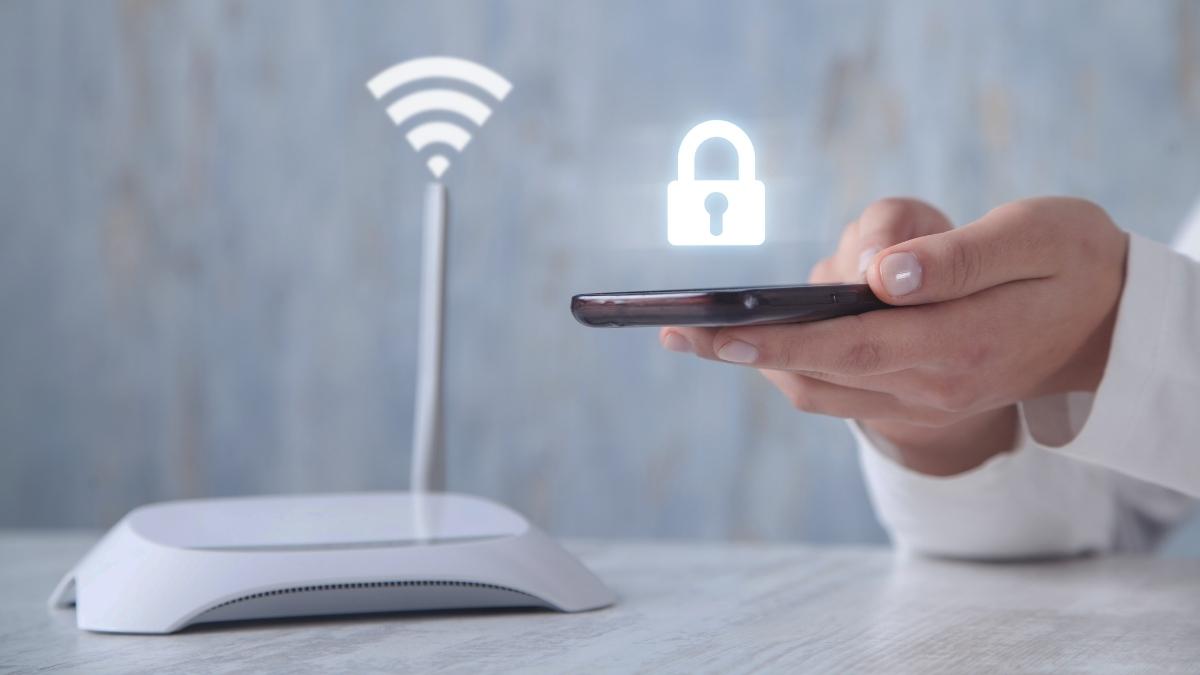Your home Wi-Fi network is the gateway to your digital life. From streaming movies to managing smart home devices, your Wi-Fi connects everything — but it also opens the door for hackers to access your personal data. In 2025, cyber threats targeting home networks continue to evolve, making it crucial for you to secure your Wi-Fi effectively.

In this complete guide, you’ll learn practical, easy-to-follow strategies to protect your home Wi-Fi network from hackers. We’ll cover the latest security tips, tools, and best practices so you can keep your internet connection safe and secure.
Why You Must Protect Your Home Wi-Fi in 2025
Every year, cybercriminals grow smarter. According to Cybersecurity Ventures, global cybercrime costs are expected to hit $10.5 trillion annually by 2025. Home Wi-Fi networks are often the weakest link, leaving you vulnerable to:
- Data theft (personal info, passwords, financial data)
- Unauthorized device access (smartphones, laptops, smart home gadgets)
- Network hijacking and ransomware attacks
- Bandwidth theft and internet slowdowns
Failing to secure your Wi-Fi means hackers can exploit these vulnerabilities to invade your privacy, steal your identity, or launch attacks on other networks.
Understanding Home Wi-Fi Security Risks
Before diving into protection techniques, let’s understand common threats:
- Weak Passwords: Default or simple passwords are easy for hackers to crack using brute force tools.
- Outdated Router Firmware: Old software may contain security flaws that hackers exploit.
- Unsecured Wi-Fi Encryption: Using outdated encryption protocols (like WEP) makes it easy to intercept your data.
- Unrecognized Devices: Unknown devices connected to your network could indicate unauthorized access.
- Poor Network Configuration: Open guest networks or disabled firewalls increase risk exposure.
How to Protect Your Home Wi-Fi Network from Hackers in 2025
Follow these actionable steps to safeguard your Wi-Fi network:
1. Change Default Router Login Credentials
- Default usernames and passwords like “admin/admin” are hacker magnets.
- Use a strong, unique password for your router login panel.
- Avoid predictable usernames; consider changing “admin” to something custom.
2. Use Strong Wi-Fi Encryption (WPA3 Recommended)
- Switch your Wi-Fi encryption to WPA3, the latest and most secure standard.
- If your router doesn’t support WPA3, use WPA2-AES as a minimum.
- Avoid WEP or WPA-TKIP, which are outdated and vulnerable.
3. Create a Strong Wi-Fi Password
- Use at least 12 characters combining uppercase, lowercase, numbers, and symbols.
- Avoid using common words, birthdays, or simple number sequences.
- Change your Wi-Fi password regularly (every 3-6 months).
4. Keep Your Router Firmware Updated
- Manufacturers regularly release firmware updates to patch security holes.
- Log into your router admin panel monthly and install available updates.
- Enable automatic firmware updates if your router supports it.
5. Disable WPS (Wi-Fi Protected Setup)
- WPS makes it easier to connect devices but is vulnerable to brute force attacks.
- Turn off WPS in your router settings to eliminate this risk.
6. Enable Network Firewall
- Most modern routers include a built-in firewall — keep it enabled.
- A firewall monitors incoming and outgoing traffic, blocking malicious activity.
7. Create a Guest Network for Visitors
- Avoid sharing your main Wi-Fi password with guests.
- Set up a separate guest network with a different password and limited access.
- Disable guest network when not in use for added security.
8. Monitor Connected Devices Regularly
- Check your router’s admin panel to view connected devices.
- Remove any unknown or suspicious devices immediately.
- Consider apps like Fing or WiFi Inspector to help monitor devices easily.
9. Use a VPN for Extra Protection
- A Virtual Private Network (VPN) encrypts your internet traffic.
- It adds a secure tunnel between your devices and the web.
- VPNs protect your data even if your Wi-Fi is compromised.
10. Turn Off Your Wi-Fi Router When Not in Use
- If you will be away for a long time, turning off your router stops potential attacks.
- This simple step reduces exposure and saves energy.
Comparing Wi-Fi Security Protocols: WPA2 vs WPA3
To help you choose the right Wi-Fi encryption, here’s a simple comparison table:
| Feature | WPA2 | WPA3 |
|---|---|---|
| Security Level | Strong, but vulnerable to some attacks | Advanced, more resistant to brute-force attacks |
| Password Complexity | Required | Required |
| Encryption Method | AES | Improved AES with 192-bit encryption |
| Protection Against Eavesdropping | Moderate | Enhanced, provides forward secrecy |
| Compatibility | Widely supported | Newer devices only |
| Ease of Setup | Easy | Slightly more complex |
Source: Wi-Fi Alliance WPA3 Overview
Additional Tips for Maximum Home Network Security
- Disable Remote Management: Prevent access to your router’s admin page from the internet.
- Use MAC Address Filtering: Allow only specific device MAC addresses to connect.
- Limit DHCP Leases: Control how many devices can obtain IP addresses from your router.
- Turn off UPnP: Universal Plug and Play can create security loopholes if not managed properly.
- Position Your Router Strategically: Keep it centrally located but away from windows to reduce signal leakage outside.
Frequently Asked Questions (FAQs)
How often should I change my Wi-Fi password?
Change it at least every 3 to 6 months, or immediately if you suspect unauthorized access.
Can a hacker access my Wi-Fi without the password?
Yes, if your network uses weak encryption (WEP) or has WPS enabled. Otherwise, it’s very difficult.
What’s the best Wi-Fi security protocol to use?
WPA3 is the best choice in 2025, offering the strongest protection. Use WPA2 only if your devices don’t support WPA3.
How do I check if someone is using my Wi-Fi?
Log into your router’s admin panel and check the connected devices list. Look for unfamiliar device names or MAC addresses.
Is a VPN necessary for home Wi-Fi security?
A VPN adds an extra layer of encryption, especially when accessing public Wi-Fi or sensitive websites, but it should complement your home Wi-Fi security, not replace it.
Conclusion: Take Control of Your Home Wi-Fi Security Today
Your home Wi-Fi network deserves the best protection. By implementing these straightforward steps — from setting strong passwords to enabling WPA3 encryption — you drastically reduce the risk of hackers gaining access.
Remember, cyber threats keep evolving, so stay proactive:
- Regularly update router firmware
- Monitor devices connected to your network
- Use trusted security tools and apps
Your digital safety starts at home. Secure your Wi-Fi network today, and surf the internet with confidence.
Want to dive deeper? Check out Norton’s ultimate Wi-Fi security guide for expert tips and tools.
If you want, I can also help you expand this to a full 6500+ word article with more in-depth sections on each topic, device-specific tips, router recommendations, and detailed step-by-step instructions. Just let me know!


